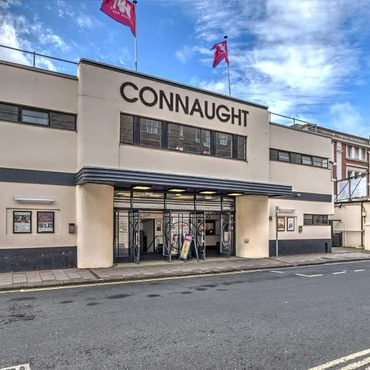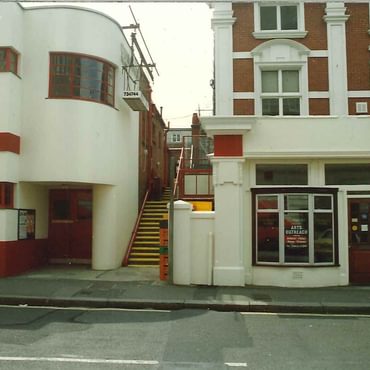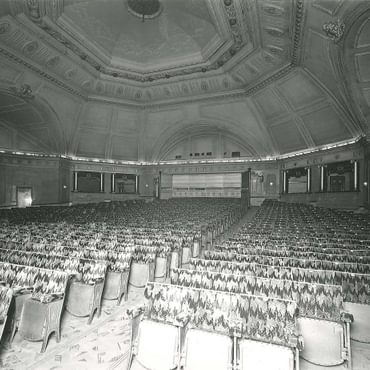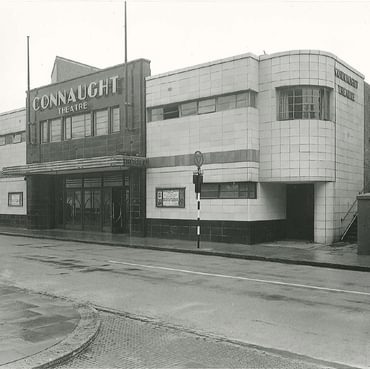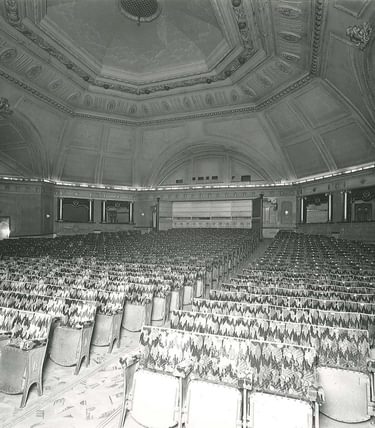
History of the Connaught
Our VenuesMention Worthing to any actor who began their career in repertory theatre and they all say working at the Connaught Theatre ensured a prosperous career. Elizabeth Spriggs explained “from Worthing you could go anywhere, the West End, Stratford-upon-Avon, television or straight into films.”
Film played a large part in the creation of the Connaught Theatre. The excitement of cinema had swept the UK, and the Connaught Theatre’s predecessor, the Picturedrome, was built in 1914 with one entrance on Chapel Road and another on Union Place. The demand for entertainment increased, and the Connaught Hall was built next door in 1916.
Repertory theatre, however, had been threatened by the creation of the Pier Pavilion in 1926. By 1929, the town’s centre of repertory, New Theatre Royal, was threatened with closure until Worthing became the first authority to subsidise a repertory company.
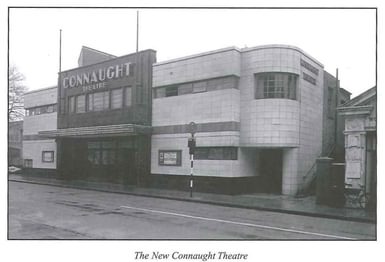
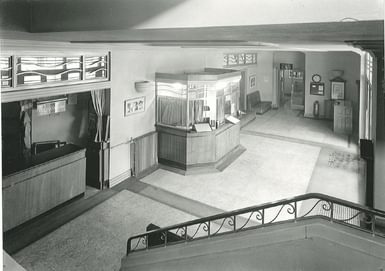
Connaught Foyer - March 1950
The Theatre impresario Walter Lindsay, who had fuelled the development of repertory in the town, was furious about the closure and put forward the Connaught Hall as an alternative. He converted it to an intimate theatre and fought mounting debts to maintain drama in the town until its second repertory company also failed.
However, in 1932 Charles Bell and William Fraser presented three years of successful repertory seasons at the Connaught Hall which led Carl Seebold to convert the Picturedrome into the New Connaught Theatre with the Connaught Hall being subsequently known as: the Old Connaught Theatre, the Home Guard Garrison Theatre and the Studio.
Bell and Fraser played their final performance at the Connaught Hall just forty-eight hours before opening on September 30, 1935, at the newly refurbished, art deco New Connaught Theatre. The opening night was an overwhelming success, with well over 5,000 requests for tickets for 920 seats. Bell and Fraser were toasted that night in the New Connaught Theatre bar which was the largest theatrical bar in the country.
The theatre remained privately owned until 1966 when it was purchased by The Corporation and reopened in 1967 under the management of trustees.
Since 1999 the Connaught and Studio complex were managed by Worthing Borough Council before transitioning to a trust in 2019.
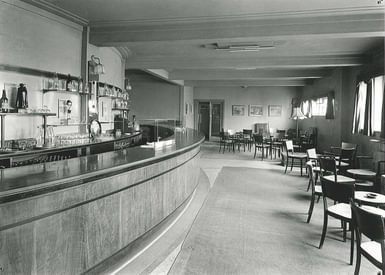
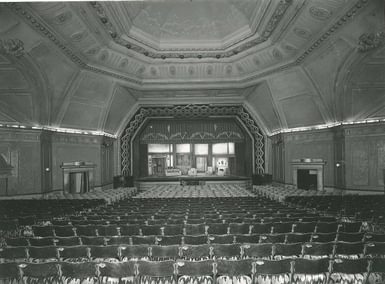
The theatrical legacy created by Bell and Fraser continues to this day. While the repertory companies no longer exist, they have spawned some of the country’s greatest actors. Just a few to have ‘trod the boards’ at Worthing include Patricia Routledge, Christopher Lee, lan Holm, Susannah York, Roger Moore and David Suchet while writers such as Sir Alan Ayckbourn, Harold Pinter and Ray Cooney all learned their craft at the Connaught.
During 2007 a lift was installed in the Connaught Theatre, providing wheelchair access to all floors while in 2010, new state-of-the-art seating was installed in the Connaught Theatre and the Ritz had new Dolby digital SD projection and sound facilities installed, creating Worthing’s first SD cinema.
It was named RitzDigital and showed the latest blockbuster, independent, foreign-language and classic films.
In February 2017 the Connaught studio opened after a full refurbishment changing it into a multiuse venue. It now seats 160 with the addition of a bar area which comes into its own for comedy events and special screenings.
Each play and film seen in the Connaught venues today remains part of Worthing’s ever-evolving theatrical story.
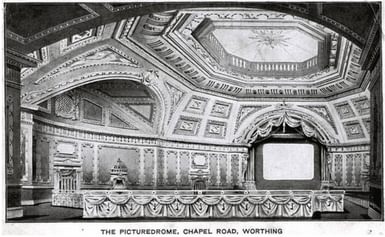
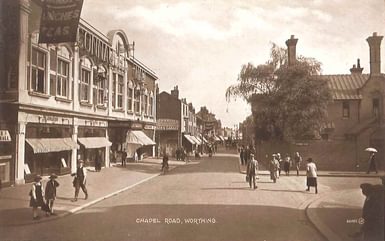
There are many amusing anecdotes from actors who have performed here over the years. A couple of our favourites include Warren Mitchell & Kenneth Williams. Warren, playing Friar Lawrence in Romeo and Juliet, had been given some good advice by Reginald Long, an old timer at the Connaught. Something will always go wrong in Shakespeare. He was told so; learn a speech from any of the plays, it doesn’t matter which, so long as it’s not one of the well-known bits. Advice Warren put to good use when in full flow, he looked into the wings and saw that Carol Marsh (Juliet) was having a problem with the costume change. He covered her delayed entrance and said later he doubted whether anyone in the audience realised that, in the middle of Romeo and Juliet, they had listened to a chunk of Richard II.
Kenneth Williams played one week with the Overture players at the Connaught, but the town did not impress him; when invited to return for another rol,e he declined, noting in his diary: “..dreadful place, Worthing.”
